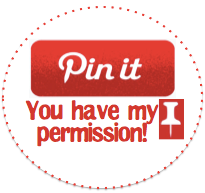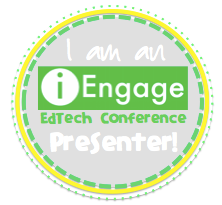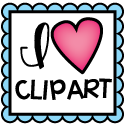Session 4: Teaching Academic Vocabulary with Six Interactive Strategies
The session began with Courtney Gordon, the presenter, sharing some research findings with us. Acknowledging the research at the start of the session enabled the attendees to better understand the significance of teaching students strategies to improve their academic vocabulary, or better yet, the consequences if we don't. Students knowing and understanding vocabulary words in a text is key to their comprehension.
- Vocabulary is among the greatest predictors of reading comprehension (Baker, Simmons, and Kameenul), and reading comprehension is central to learning in the content areas. (Fischer & Frey)
- Researchers estimated that for students in grades 4-12, a 6,000 word gap separated students at the 25th and 50th percentile. (Nagy & Herman)
- Students need to know 96% or more of the words within any given text to comprehend its message. (Robb)
- Simply being well-read does not cause students to learn vocabulary as deeply as they need to. Direct vocabulary instruction is necessary! (McKeown)
- A robust approach to vocabulary instruction involves directly explaining the meanings of words and providing thought-provoking, playful, and interactive follow-up. (Beck, McKeown & Kucan)
- The number of exposures to a word is key. It can take upwards of 40 exposures to a word for a struggling and at-risk student to really understand, own and master a word.
Those findings are thought-provoking, to say the least. Have you ever heard of the 4-14-40 research from Robert J. Marzano? I learned of it years back when taking courses for my ESL Endorsement. The last bullet point in the research above is part of the 4-14-40 research. If you are unfamiliar, it can be explained as follows:
The highest-achieving students can learn a new term with as few as 4 exposures to it. The average student needs to work with a word up to 14 times in order to master it. And your most struggling learners need as many as 40 different opportunities to work with a single word to finally learn it. (Smekens Education 2015)
Can you believe it? 40 exposures to a word is what it takes for some students to learn a single word. Marzano's six interactive vocabulary strategies can help close that astonishing word gap mentioned in the research findings. The strategies are Explain, Restate, Show, Develop, Refine and Play. There is a power to the order of the steps!
STEP 1: EXPLAIN
The first step is all about the teacher and how he/she explains terms to the students. Students require hearing an informal definition of a word presented in kid-friendly terms first. Warning: Try not to use adult-language. Students also need to be given a link or connection between the word and the students' background knowledge. Connections are made using relevant examples, such as:
- Life experiences
- Stories, anecdotes
- Scenarios, hypothetical situations
- Visuals, videos,
- Real-life objects
- Current events
A strategy called "Let's Make Connections" can be used during this step when introducing a new term (as well as during Step 6: Play). Students sit in a close-knit circle making as many connections to a word as they can while gently tossing a ball back and forth to one another. We were told this ball is like *magic* because students can't wait to get their hands on it and share their connections. It's always top-notch when kids are motivated to participate! All of the attendees received a "Let's Make Connections" ball at the retreat. I can't wait to put mine to good use with my students.
STEP 2: RESTATE
STEP 2: RESTATE
Students start to progress in their understanding of a word in Step 2. They are required to demonstrate their understanding by restating it in their own words. Students can use sentence stems for support. Here are some examples:
- It is something...
- It is someone...
- It describes...
- It is a concept...
- It is the idea that...
- It explains...
Another suggested activity for this step is to have students rewrite the lyrics to a popular children's song (Twinkle, Twinkle Little Star, Mary Had a Little Lamb, etc.) to explain a term. For example, using the tune Twinkle, Twinkle Little Star, a student may explain the term "boulder" like this: "Boulder Boulder big, big rock"...and so on.
I must say, there were tons of giggles and outright bursts of laughter coming from the tables all around me at the retreat. We were asked to create lyrics to explain a term picked from a baggie. Trying to make up lyrics to reiterate the meaning of a term to a particular beat can be quite hysterical, actually. I am not musically-inclined...at all. I think that's why I married a musician. I was hoping his lyrically gifted tendencies would rub off on me. That hasn't happened. It was fun making a slight fool of myself at the retreat and was a wonderful learning experience. I bet my students would have a blast doing this activity, just as I did. The student instructions are as follows:
STUDENT INSTRUCTIONS
1. Listen to the tune of [chosen song title}.
2. Generate a list of related words and phrases for your term.
3. Arrange and rearrange the words and phrases to convey the terms meaning and fit the rhythm/rhyme of the song.
(Smekens Education 2015)
If students prefer to have a freestyle beat (upper-elementary through high-schoolers, maybe?), use this suggested tune found on YouTube. If you have the time, pick a term and try it for yourself using the beat below! :)
Students show in a non-linguistic representation the meaning of a word by using abstract tools. Visuals help cement academic vocabulary into a student's memory. Some methods to have your students use are:
- Identify, find or select images that represent the word
- Reveal a physical object that represents the word
- Illustrate meaning by drawing an object, an example, graphic, etc.
- Act out the meaning of the word
- Create a physical or digital model to represent the word's meanings
You can access free resources all over the Internet, including these suggested sites, Photo Flashcards and InsideStory Flashcards. Students can manipulate play-dough for a more kinesthetic approach, too. Below is a handout from Smekens Education you may find useful.
STEP 4: DEVELOP
Students develop a deeper understanding of a word when they apply it in multiple contexts. Based on Marzano's 4-14-40 research, students should have the opportunity to create additional vocabulary activities to deepen their understanding. Try using the following activities with your students:
- Identify synonyms & antonyms
- Define root meanings (prefix, base, suffix)
- List, sort & classify related words
- Note similarities and differences to other words
- Identify common confusions and misunderstandings
- Write or draw analogies
Wordle is a free online tool that generates word collages. This resource can support students' vocabulary development in a fun way. A recommended activity is to have students create a Wordle for a specific vocabulary term using descriptive language. Then have classmates take turns guessing the vocabulary word based on the clues given in the Wordle. Below is a student's example given to us at the retreat. Can you guess what the student was describing?
STEP 5: REFINE
STEP 5: REFINE
Students use peer interactions to express their thinking, appreciate different perspectives and develop their overall understanding of a word. Teachers need to make sure to offer many social opportunities in the classroom for students to discuss terms in pairs, small groups and as a whole class. Students' conversations should focus on:
- Explanations & restatements
- New examples
- Newly learned information or "A-ha!" moments
- Areas of confusion or disagreement
I'm sure you've seen this scenario over and over again...students pick the same partners every...single...time and the same kids are the talkers, while others just sit and listen. The listeners are usually the shy students or the ones just "taking it all in". Right? Well, to encourage participation from everyone, teachers could use Clock Buddies. Students are given a clock image on paper. They each place their name in the center of the clock and their peers names in different hour slots around the clock. The teacher calls out, for example, "For this activity, you'll be working with your 2 o'clock buddy (buddies)." It's a cute idea and simple enough to implement in your classroom tomorrow! Click the image below to download the example and a master copy for yourself.
STEP 6: PLAY
STEP 6: PLAY
This last step is game-like to promote vocabulary knowledge. Once students are able to truly understand a group of terms, they can cement their learning through play. The activities need to be kept face-paced to help move recall from deliberate to automatic! Games can either be low-pressure or intense competition. We were told, Hangman is a spelling game, not a vocabulary game! However, the following are good examples of games students can play:
At the end of this session, I walked out a minute early to get some water and heard my name being called. I quickly scurried back in to find out my name was pulled from the raffle bowl! I won the Hedbanz game and can't wait to use it with my kiddos. ;)
Academic Vocabulary and Testing: Where are we headed?The video called Increase Test Success with Academic Vocabulary was shared with us at the Literacy Retreat. It shows Krista Smekens explaining how to better prepare students for more complex words that tend to be within test questions. Further resources to support academic vocabulary are below. Click on them to download a copy for yourself. :)
If you are looking for a book recommendation, check out Marzano's book Building Background Knowledge for Academic Achievement: Research on What Works in Schools. Courtney Gordon referenced it as a useful resource for teachers looking to promote the academic success of students needing vocabulary support. We were told this book nicely merges research and classroom application.
Thanks for stopping by Literacy Loving Gals to learn more about supporting your students' academic vocabulary growth. Your students will thank you. Check back to view the next topic in this mini-series, Session 5: Differentiating to Support English Language Learners. It will be coming soon! :)











































So many wonderful ideas! I really like the one with the ball and making connections to the vocabulary. Students really enjoy making their own connections and I have found that that is a key component to helping them learn the word. Thank you for all the ideas!
ReplyDeleteLori
Conversations in Literacy
Thanks so much for commenting, Lori! Yes, I think I'm going to enjoy the "Let's Make Connections" ball with my students this year and agree personal connections are key to student learning. :)
DeleteWhat a great post on vocabulary instruction! I am def. saving this so I can read it and re-read it! Thank you!!
ReplyDeleteKatie
Mind Sparks
Thank you, Katie! That's so nice of you to say. :) I certainly loved attending the Literacy Retreat and can't wait to put all of the strategies to use with my students. I'm glad you'll be back!
Delete